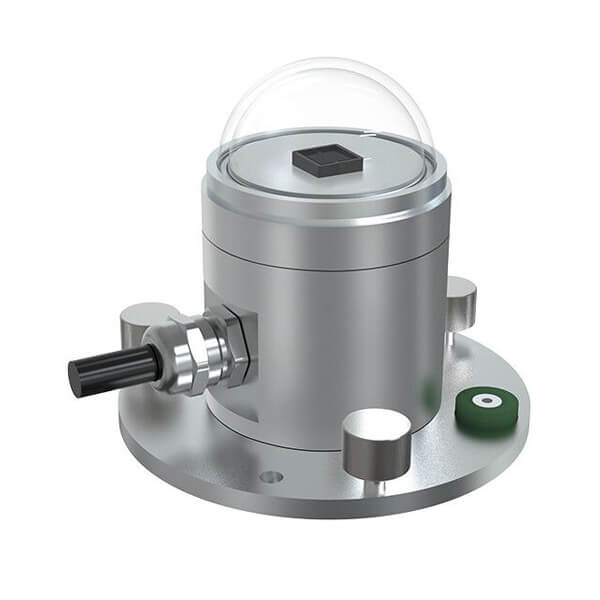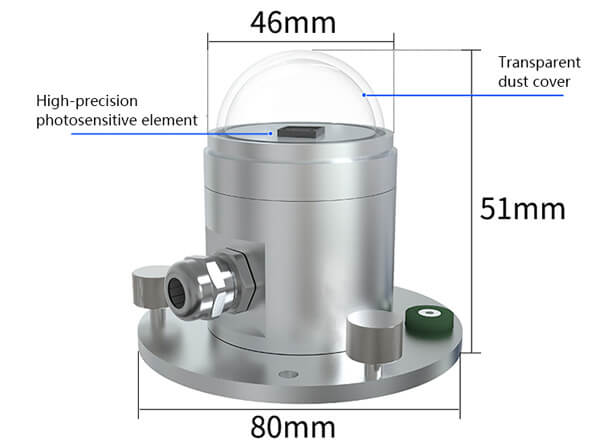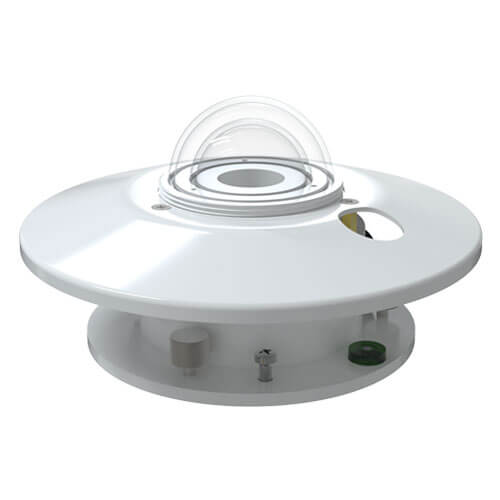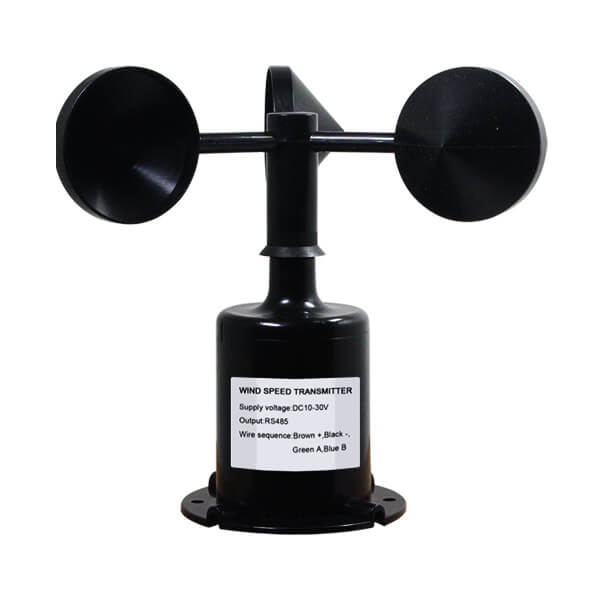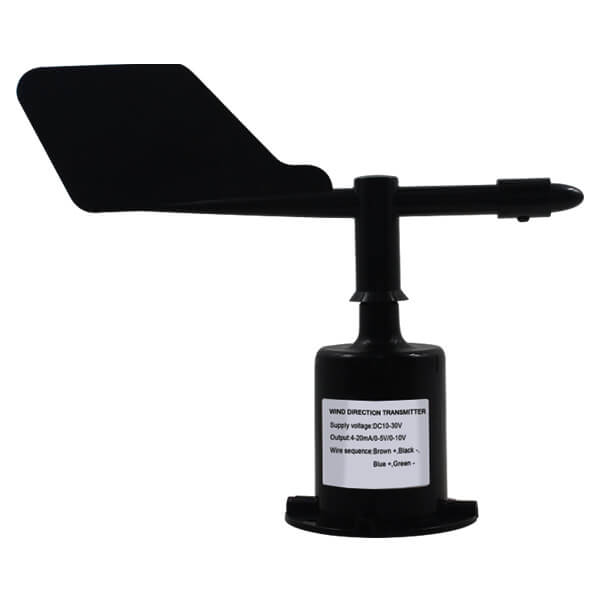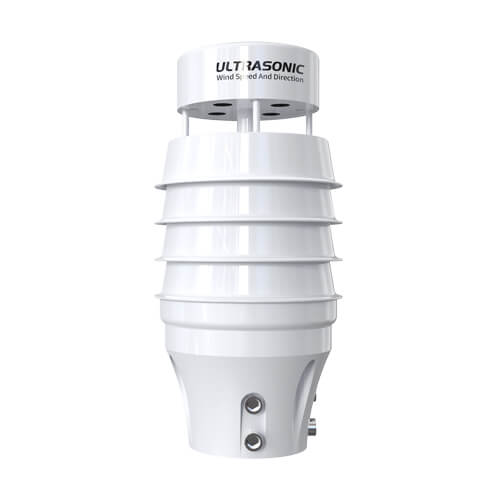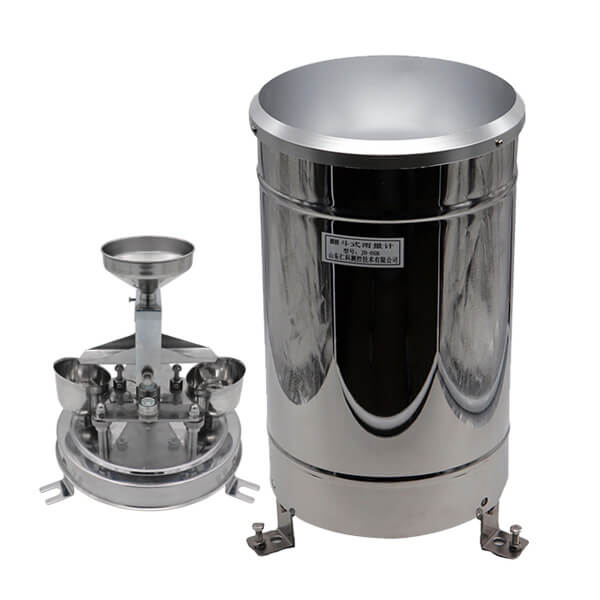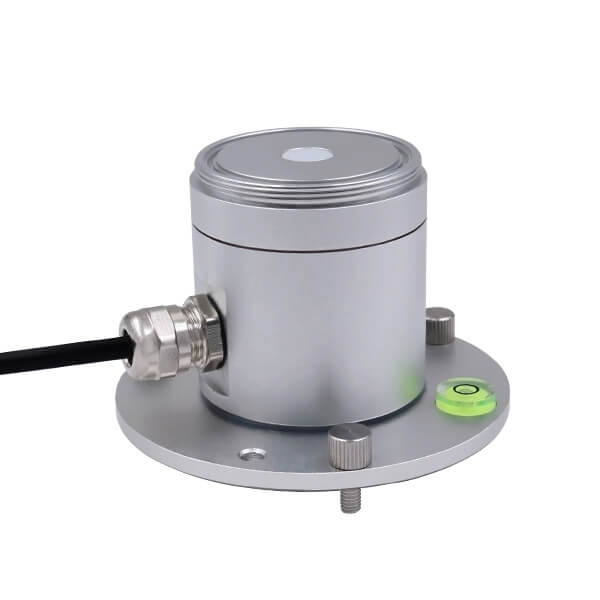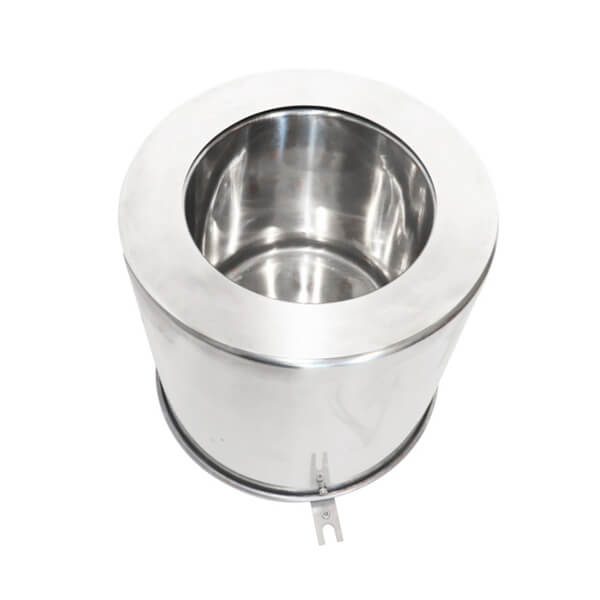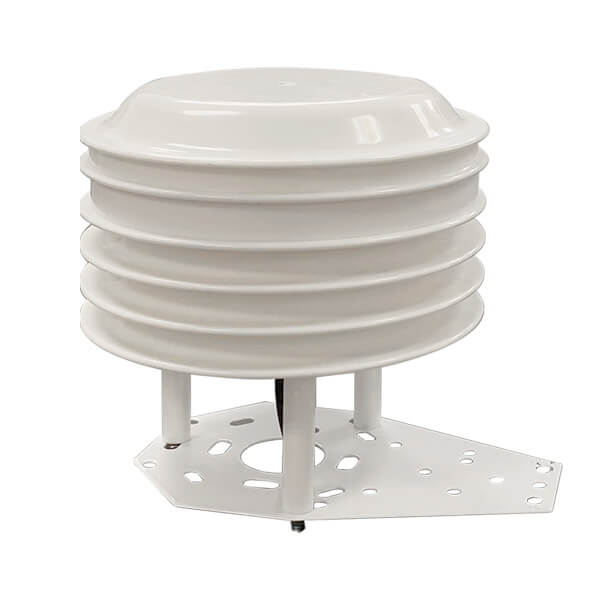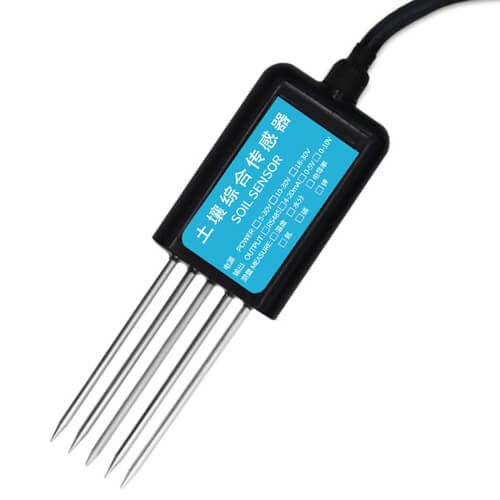Table of Contents What is solar radiation? Solar radiation is the energy emitted by the sun into the surrounding space in the form of electromagnetic
Solar Radiation Sensor
This solar radiation sensor or pyranometer is an instrument for measuring solar radiation. It measures the solar energy received from the entire hemisphere (180 degree field of view). Solar radiation varies significantly among regions. Season and time of day are major considerations, but surrounding terrain elevation, man-made obstructions, and surrounding trees can also cause large variations in locations with a small area.
- Model: RS-RA-*-AL-EX
- MOQ: 1 PCS
- Delivery date: within 24 hours
- Price: $63
View - Solar Radiation Sensor
RS-RA-*-AL-EX solar radiation sensor adopts photoelectric principle and can be used to measure the total radiation value under sunlight. The radiation sensor uses high-precision photosensitive elements, wide spectrum absorption, high absorption in the full spectrum range, and good stability. A dust cover with a light transmittance of up to 95% is installed outside the sensing element, and the dust cover is specially treated to reduce dust Adsorption can effectively prevent environmental factors from interfering with internal components, and can more accurately measure solar radiation.
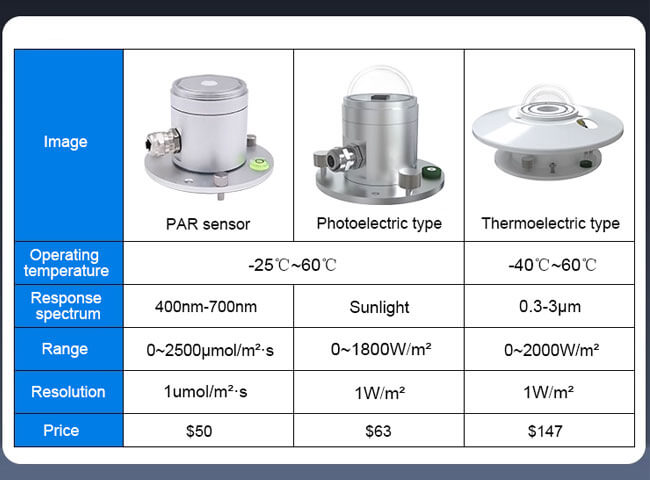
Features
1. Using high-precision photosensitive elements, high absorption in the full spectrum range.
2. Comes with level meter and adjustment handwheel, convenient on-site adjustment.
3. High transparent dust cover, good sensitivity, special surface treatment to prevent dust adsorption.
4. Wide voltage power supply DC 7~30V.
5. Solar radiation sensors are widely used in industries such as photovoltaic power generation, meteorological monitoring, smart agriculture, construction, and environmental protection.
Datasheets
| Power supply | 0V~30V DC (RS485), 7V~30V DC (Analog) |
|---|---|
| Max. power consumption | 0.6W (RS485), 0.06W (analog) |
| Operating temperature | -25℃~60℃ |
| Measurement object | Sunlight |
| Measure range | 0~1800W/m² |
| Resolution | 1W/m² |
| Response time | ≤10s |
| Non-linearity | <±3% |
| Annual stability | ≤±3% |
| Output signal | RS485/4-20mA/0-5V/0-10V |
Solar radiation meter installation
1. Use screws to pass through the mounting holes on the sensor to fix the sensor on the mounting position .
2. Make sure the equipment is parallel to the ground (adjustable thumb screw and check the state of the horizontal bubble to determine whether it is parallel) .
3. After the installation is complete, remove the protective cover.
Solar radiation meter maintenance
1. The dust cover needs to be kept clean and clean, often wipe it with a soft cloth
2. There should be no water in the dust cover. If it encounters heavy rain, snow, ice, and other long-term weather, it is recommended to cover it.
FAQs - Solar Radiation Sensor
What is solar radiation?
Solar radiation refers to the sun transmitting energy in the form of electromagnetic waves, and the electromagnetic waves and particle streams emitted by the sun into the universe. The energy transferred by solar radiation is called solar radiant energy. The value of the solar constant published by the World Meteorological Organization (WMO) in 1981 is 1368 W/m2. More than 99% of the solar radiation spectrum of the upper boundary of the earth’s atmosphere is between 0.15 and 4.0 microns in wavelength. About 50% of the solar radiation energy is in the visible spectrum (wavelength 0.4~0.76 microns), 7% is in the ultraviolet spectrum (wavelength <0.4 microns), 43% is in the infrared spectrum (wavelength> 0.76 microns), and the maximum energy is at a wavelength of 0.475 Micron.
Why measure solar radiation?
The annual total solar radiation refers to the amount of solar radiant energy obtained in an area of 1 square centimeter in a year. Based on this, the distribution of the total solar radiation in a region or a country can be analyzed. There are two parts of solar radiation reaching the ground: one is that the sun is directly projected onto the ground in the form of parallel rays, which is called direct solar radiation. The second is that part of the energy of solar radiation is scattered in all directions with these particles as the center when it encounters air molecules or tiny dust. Part of the energy after scattering is projected from the sky to the ground, called scattered radiation, the sum of the two Called total radiation. It is the solar radiation that reaches the ground, of which direct radiation accounts for the main part.
What is a pyranometer?
Pyranometer is a device that measures solar irradiance from a hemispherical field of view incident on a flat surface. The SI units of irradiance are watts per square meter (W/m²).
What is the difference between a pyranometer and pyrheliometer?
The main difference between a pyranometer and a pyrheliometer is the purpose of measurement. Pyranometer is used to measure global solar radiation and hence it is used for both visible and UV. Pyrheliometer is used to measure direct solar radiation.
How to wire?
For RS485 Output:
The brown wire connects to the power supply positive terminal (7–30V DC), the black wire to the power supply negative terminal, the yellow (or green) wire to RS485-A, and the blue wire to RS485-B.
For Analog Output:
The brown wire connects to the power supply positive terminal (10–30V DC), the black wire to the power supply negative terminal, the blue wire to the signal positive, and the yellow (or green) wire to the signal negative.
What is the IP rating of our solar radiation sensor?
Our solar radiation sensor is IP65.
Where to download this solar radiation sensor manual?
In order to protect the patented technical parameters, please contact us for a manual.
What are the precautions for RS485 solar radiation sensor?
1. When customers receive the product, please confirm the product model, etc.
2. Do not connect the wires with power on. Only turn on the power after the wiring is checked.
3. The sensor is a precision device. Do not remove the protective transparent cover at will.
4. If the reading value is 0, check whether there is a light source and whether the product protective cover is removed.
5. The 485 bus is disconnected, or the A and B lines are connected in reverse.
6. Check whether the power supply meets the marking.
Why is there no output or output error for analog solar radiation sensor?
1. The wiring method is incorrect or the wiring sequence is wrong.
2. The power supply voltage is incorrect (24V is used for 0-10V models).
3. The distance between the solar radiation sensor and the collector is too long, causing signal disorder.
4. The data acquisition port is damaged.
5. The equipment is damaged.
What are the dimensions of this solar radiation sensor?
The dimensions of the RS-RA-*-AL-EX solar radiation sensor are as follows:
Related Blogs
Table of Contents What is photosynthetically active radiation? The spectral component of solar radiation that is effective for plant photosynthesis is called photosynthetically active radiation
Table of Contents What is Modbus? Modbus is a serial communication protocol used for communication with Programmable Logic Controllers (PLCs). Because of its open protocol
The commonly used communication method for data acquisition and control is RS485. RS485 is a general communication standard. It can not only link devices to
The main purpose of environmental monitoring is to provide data on environmental quality and changing trends to ensure the safety of public life and property.
The weather sensors are the sensing end of the weather station and collect various weather-related data. The weather station can obtain the main parameters and
A complete set of a weather station is composed of two parts: hardware and software. The hardware part includes various weather station sensors, connecting lines,
Table of Contents Do you know where to mount weather station? The weather station should be installed as far as possible on the open ground
It is widely known that ultraviolet (UV) radiation is prevalent in the natural environment, primarily originating from solar. While most UV radiation is absorbed by

